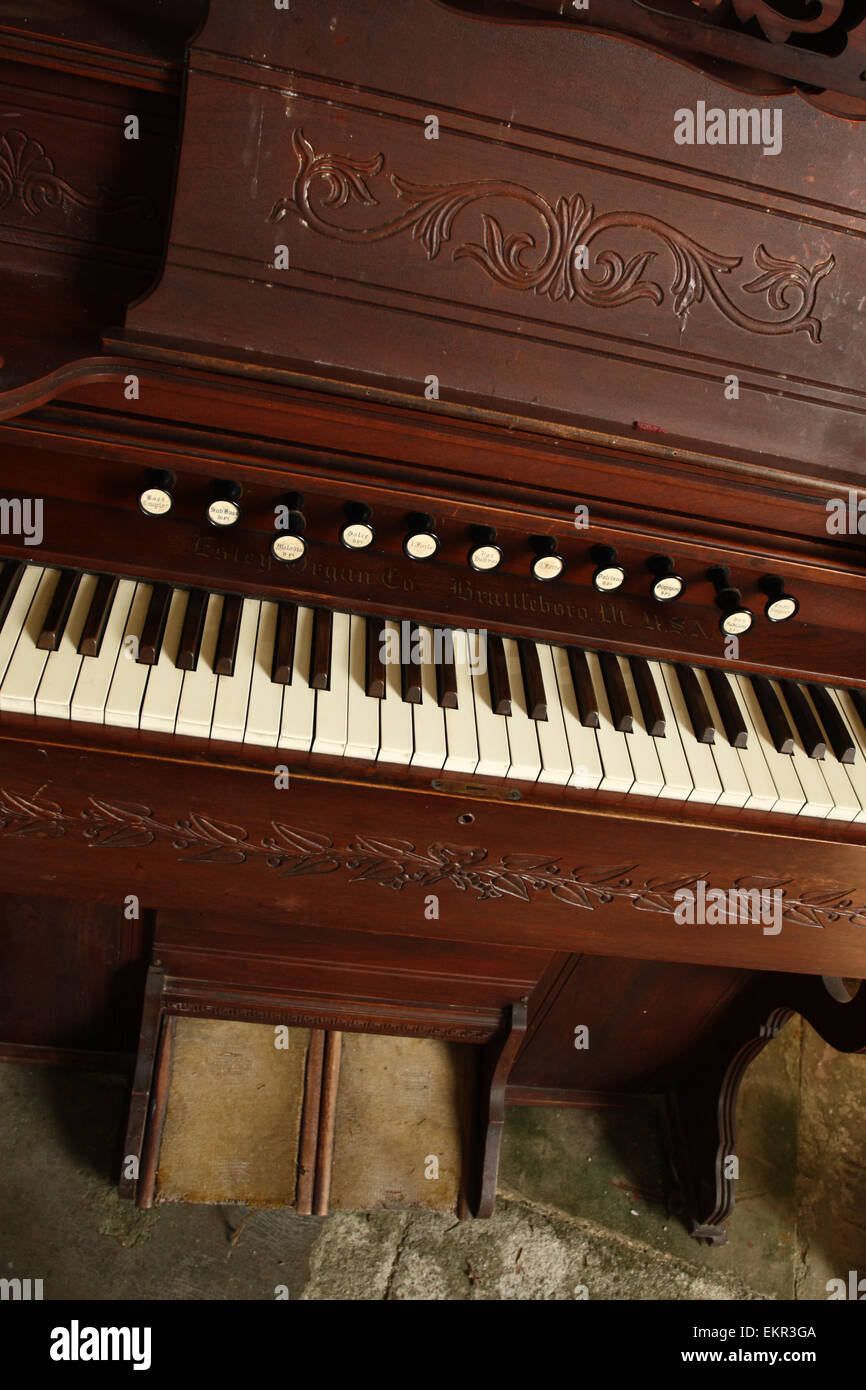

So that's the point where we are now, I think." "You know, you don't want to be spending money on storage when you could be spending money on programs and that kind of a thing. "We're only now maturing into realizing that it's also a responsibility that you want to be able to take care of them," said George. George said the museum is coming into its own and offering concerts and talks on the Estey legacy - but, like at any nonprofit, every penny counts. But as the warehouse filled up, George said, it was time to make a change. George said that, for a very long time, the museum would pretty much accept anything that had the name Estey Organs on it. The storage warehouse behind the museum is filled with broken organs and related pieces. "Because some of them make sounds, but you wouldn't call it music." "We had to stop just taking them," said Barbara George, a volunteer at the museum who owns the warehouses where the organs are being stored. Now, the museum is saying it just can't accept any more broken-down instruments.

279.The museum opened after people began donating their old organs - but with every working organ, there were three or four others that came in that needed some care.

Howard Weiss-Tisman can be reached at r.com or 80, ext.
ESTEY ORGAN LOGO 1960 HOW TO
So now we have to figure out how to take that and create something that will last a long time." "There is a lot of interest in the complex and what Estey and his people were able to achieve. "There are no shortage of ideas," he says. There are themes to explore around business, civic responsibility and changes in the world economy, all of which can be explored from the Birge Street complex where hundreds of craftspeople and employees lived and worked. There are ways to look at the promotional and marketing materials in the context of 18th and 19th century advertising history. Stimmel says there are educational programs that can highlight the company's technical and creative achievements. Stimmel, who himself will be a volunteer director, says the board should be commended for all it has been able to accomplish over the past 11 years.īut now, he says, the board can step back and perform more of the responsibilities that a non-profit organization's board of directors should be doing while he develops programs and strengthens the museum's offerings. "There is a connection people have with these organs, beyond the musical or technical end of it, and we want them to come to Brattleboro and learn more about it." "There are people all around the country who have a love of Estey Organs," he said. Stimmel says he sees all of it as important pieces of the Estey story and he wants to let more Windham County residents, as well as visitors from all over the country and world, know about the important history of the company.
ESTEY ORGAN LOGO 1960 FREE
And his house is filled with organs, many of which he accepted free of charge from home owners and churches that were clearing out their buildings. He has a hand written letter from Jacob Estey to his wife and stacks of photographs and company manuals. He owns original pencil drawings of the organs along with promotional cards the company published at the height of its popularity. He has since become a collector of Estey Organ Company memorabilia. He had played at some churches in New Hampshire and moved to Brattleboro not knowing anything about the history of the Estey Organ Company. Stimmel moved to Brattleboro about 11 years ago, just as the museum was being established. The company went out of business in 1960. The Estey Organ Museum was started about 11 years ago by local Estey Organ enthusiasts who wanted to promote and preserve the history of the Estey Organ Company.īrattleboro resident Jacob Estey bought the Estey Organ Company in 1852 and at the height of its popularity the company employed more than 500 people who built the pipe and reed organs that were shipped all over the world.Īt one time the Estey Organ Company was the largest manufacturer of reed organs in the United States. "I've been asked to take this over and see what I can do to bring more people here to see what we have." "The people who have been working on this over the years have really built a strong foundation, so now the questions is ‘Where do we go from here?'" Stimmel said while showing off his own personal collection of Estey Organ memorabilia. Stimmel was recently named as the Director of the Estey Organ Museum, and as the organization enters its second decade, he says he wants to continue growing the education and preservation programs that have been largely led by a small group of volunteer board members. So when the Estey Organ Museum board of directors came calling to see if he was interested in becoming the museum's first director he didn't miss a beat. Stimmel retired recently from his church organist job, and also scaled back on some of the accounting work he did on the side.


 0 kommentar(er)
0 kommentar(er)
